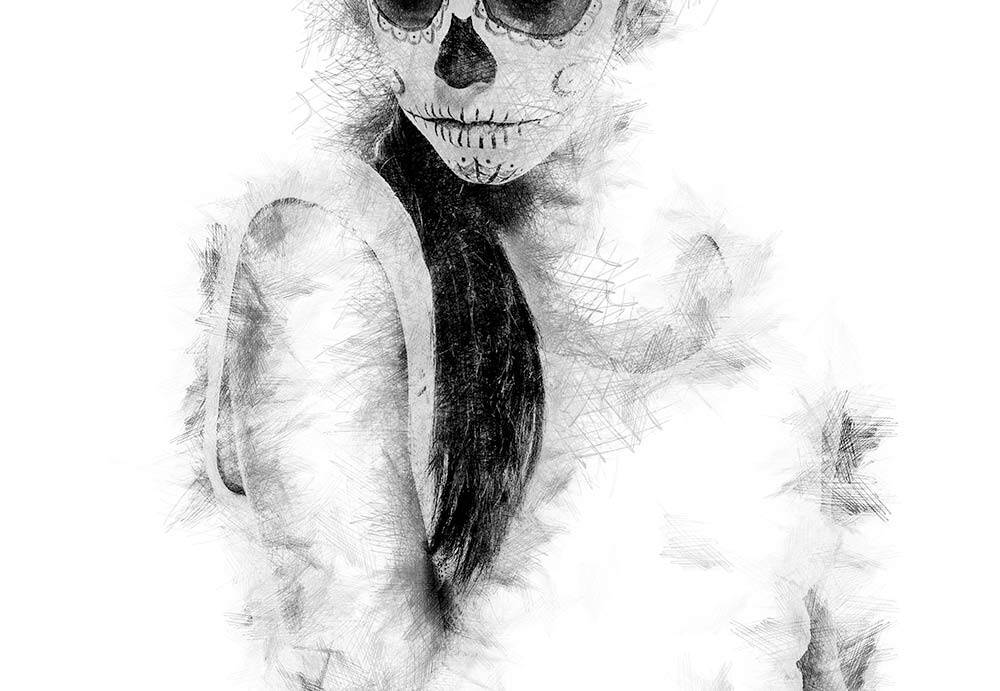Mexico has enough folklore and urban legends to make HP Lovecraft cancel his flight, though none are as menacing and confrontational as the dreaded La Mala Hora.
La Mala Hora Legend
La Mala Hora relates to The Devil’s Hour also called The Witching Hour; a time many know as 3am, and a time at which one may wake suddenly for no perceptible reason with an acute sense of dread wallowing in their stomach. This uncanny hour has been associated with practice of witchcraft, imbued with great satanic significance and even held accountable for the true story of The Amityville Horror, though residents of Mexico know it as something rather more tangible, and far more horrifying.
In 1910 the phenomenon was described by Aurelio Espinosa as a malicious entity that stalked crossroads around Mexico at night. It would hunt, torment, and even kill anyone brave enough to ignore the tales and travel home alone at such an hour. If these individuals were unfortunate enough to come across the dreaded La Mala Hora and gaze headlong into it, they would be driven hideously and irreversibly insane. Sounds like Mexico has been reading a little of Lovecraft’s work after all.
And because of this, this particular spirit is said to be more feared than the devil himself. Most of Mexico flat-out refuses to talk about it, changing the subject or simply referring to it as “an evil thing”.
La Mala Hora takes great pleasure in driving its victims mad. Not only this, but it will often attack helpless travelers, paralyzing them in their tracks and brutalizing their weakened forms. After being suffocated by the fiend their bodies are left at the side of the road.

In Chiapas, the southernmost state of Mexico, the insidious entity is told to take the form of a beautiful woman, sometimes dressed in white, sometimes in black. This incarnation and its diversely gruesome behaviours come across like some demented video game enemy gone rogue. When dressed in white La Mala Hora is said to be gentler and more graceful. She hypnotises weary travellers who, if they don’t notice the space between her feet and the ground, or the fact that her toes are backwards, or the fact that their lanterns have stopped working and all sense of direction seems lost, will follow her obediently into wherever peril she chooses. Perhaps this will be off the edge of a ravine, or perhaps in front of the next passing car.
When dressed in black, La Mala Hora is more aggressive. She will stop a traveller by any means and attack directly with her pointed nails. The strong-willed should hope to meet her on a “white night,” while no one should hope to see her in black.
One particular story has been circling the internet for quite some time, earning La Mala Hora its creepypasta certification along the way. In this story a woman goes to stay with her friend who is experiencing marital troubles. On the way she almost hits a woman in the road who, when the car stops, begins scratching fiercely at the windows in an attempt to get in. After driving away as quickly as possible, our protagonist reaches her friend who tells her frantically that she has seen La Mala Hora, the spirit who only appears when death is close. The woman then calls her husband, who she finds has been mugged and shot to death in another area.
New Mexico Legend
On the southern border of the United States, in the state of New Mexico, La Mala Hora seems to appear much closer to Espinosa’s original description. Usually it’s seen as a black abstract form, like a fleece of wool which expands and contracts, changing size and shape and seemingly floating along the roadside. A widely feared omen, this incarnation is only told to be seen when death is soon to befall a loved one. I would imagine a lot of concerned yet apologetic phone calls taking place around 3am in Mexico.
One thing is for sure; if I lived near any of the places that La Mala Hora is said to appear, I would doubtfully ever go out after midnight.
References
10 Fascinating Facts About The Devil’s Hour, 3AM – Listverse
Mexican Monstresses: La Mala Hora – Multo (Ghost) (wordpress.com)
La Mala Hora: From Scary stories at Americanfolklore.net
Urban Legends And Ghost Stories: La Mala Hora (urbanlegends66.blogspot.com)
Joe first knew he wanted to write in year six after plaguing his teacher’s dreams with a harrowing story of World War prisoners and an insidious ‘book of the dead’. Clearly infatuated with horror, and wearing his influences on his sleeve, he dabbled in some smaller pieces before starting work on his condensed sci-fi epic, System Reset in 2013.Once this was published he began work on many smaller horror stories and poems in bid to harness and connect with his own fears and passions and build on his craft.
Joe is obsessed with atmosphere and aesthetic, big concepts and even bigger senses of scale, feeding on cosmic horror of the deep sea and vastness of space and the emotions these can invoke. His main fixes within the dark arts include horror films, extreme metal music and the bleakest of poetry and science fiction literature.
He holds a deep respect for plot, creative flow and the context of art, and hopes to forge deeper connections between them around filmmakers dabbling in the dark and macabre.

